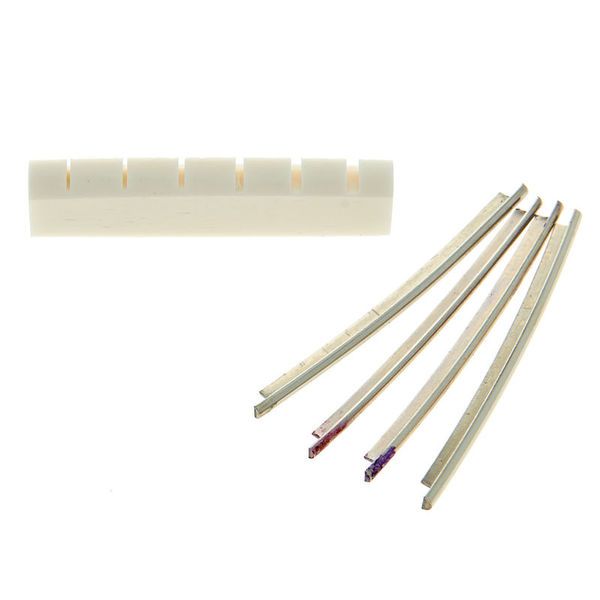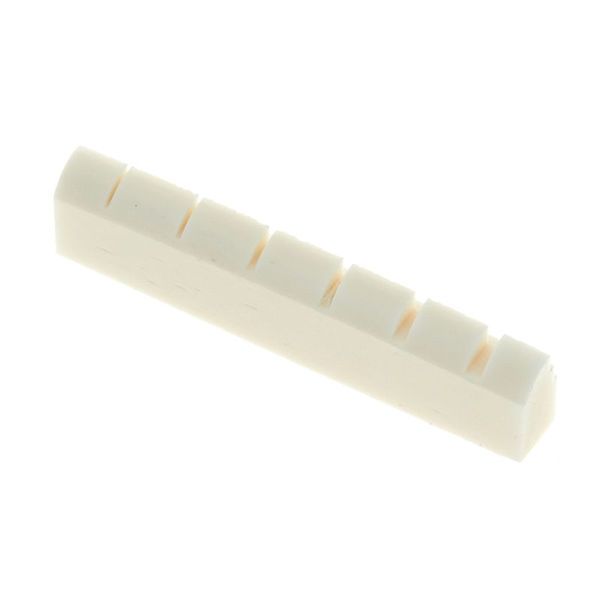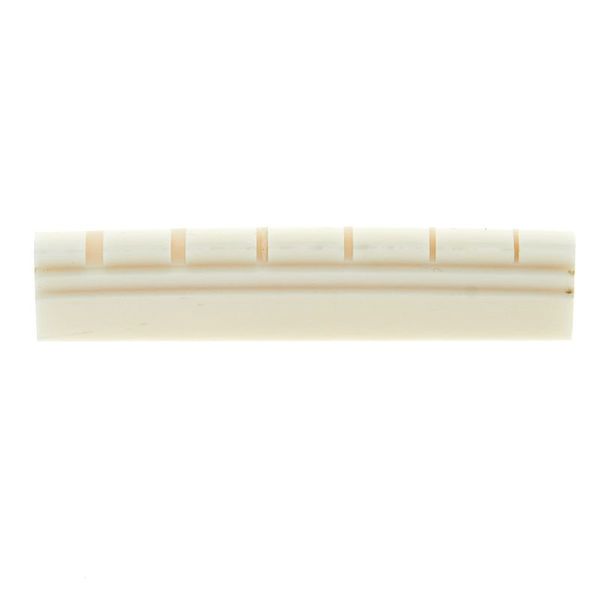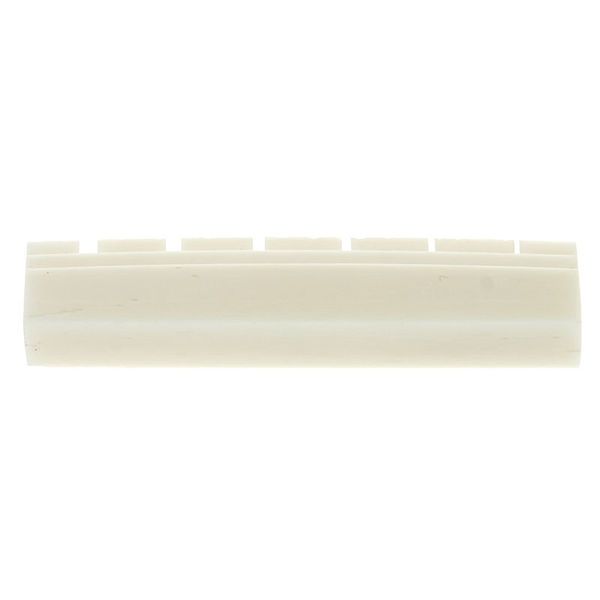fits Ibanez AG95 like a glove, and has turned this mid-price archtop into a truly superior, higher-grade instrument, with an intonation that is now spot-on, fully-exact, across the whole fretboard – any string, any fret.
tuning machines now perform significantly smoother, and even with the quite steep offset angle of the guitar's two center strings D and G (due to the styling of the guitar's headstock), the friction's now gone, too, which makes tuning a much faster, simpler, easier process.
the original nut that came with the guitar was definitely its less-worthy part, actually a hastily-cut and unevenly-filed piece (and of cheap plastic, too), so it left plenty of room for improvement anyway.
now, not only size and geometry are exactly correct, but the Zero Glide nut and fret have graced the instrument, and brought it closer to instruments with a cost factor of x-times, in terms of tone and playability, too.
sustain has greatly improved, and with the zero-fret concept implemented here, the output level of each string is now perfectly even, smoothly balanced against all others' – and this happens when playing acoustic-only (unplugged), too!
the added benefit of having the same tonal response at each string –regardless of it being either plucked open, or fretted – is a luxury that leads to exploring voicings you wouldn't really try on any "standard nut" guitar, to a certain extent.
i'm not a professional luthier, i've had no formal training on the matter, and ideally i would have preferred to have the Zero Glide nut kit installed by a trusted luthier – despite the moderate price of the guitar itself – in return of the piece of mind that anything had been done properly... but with COVID-19 came the lockdown, which made luthier unreachable, so i had to do the job myself, with what few tools i own, and without much previous experience on this type of things.
i could only do it slowly, with an utterly careful attention, measuring almost after each stroke on sand paper or file, until both nut and fret were finally sized right – so right, actually, that it now fits snug, and keeps itself in place, without even a drop of glue under it... i took indeed my time, while luthier would have been blazing fast in comparison, and would have made the job look like it had always been there, like it was factory-installed from the start... let's be fair, my execution is a bit crude, without the shine (and smooth-to-the-touch feeling) of a thick glossy coat that i couldn't apply where it connects to the neck's finish... but the job turned out to be easy to figure and carry out, and the result is a game-changer for what is now a guitar on par with ones of three or four orders of magnitude in price.
to make matters even more perfect, though, there's an extra bit that Musikhaus Thomann should definitely add to its offer, as an extra item to be bought on the side: it's the selection of (these very) "Zero Glide frets" in stainless steel that the manufacturer offers on its website.
why you want them, too, is easy to explain: stringing and restringing, tuning and retuning, in the (not so very) long run, cuts a groove under each string on the zero fret that grows from microscopic at first, to tiny after some time, which may spoil the fun-factor when doing "bendings".
stainless steel fretwire doesn't suffer from this otherwise perfectly typical kind of wear, so it would make sense that it was available for shopping here, too.
all in all, it's a piece of superb ingenuity and simplicity, one that can boost the actual performance of your instrument, and make it so much more fun to play, tone- and touch- and tune-wise, at a price that's almost gifted – against the benefit it returns.
highly recommended – and i'm about to install it on other guitars, both solid- and hollow-bodied, too.













